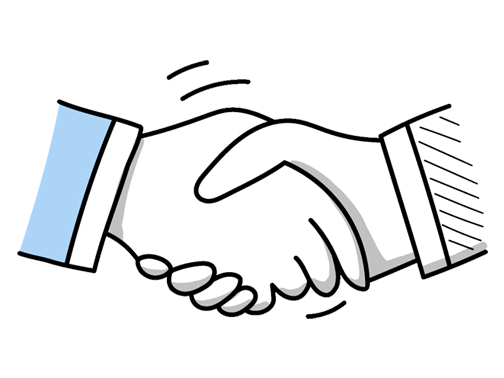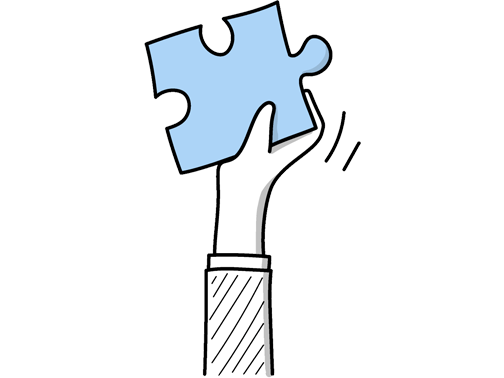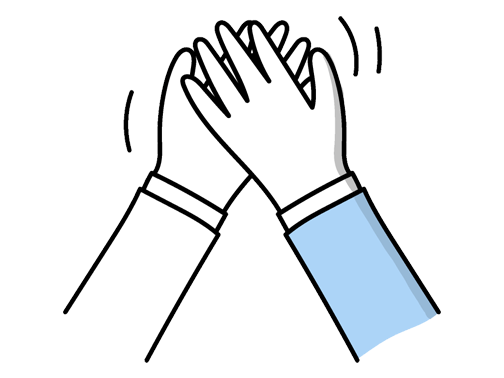Sheet Metal Fabricator Interview Questions (2025 Guide)
Find out common Sheet Metal Fabricator questions, how to answer, and tips for your next job interview
Practice Interviews Online - Identify your strengths and weakness in a realistic Sheet Metal Fabricator mock interview, under 10 minutes
Practice Now »Sheet Metal Fabricator Interview Questions
Hiring managers ask this to understand your industry experience and how your skills added value. You should briefly mention the industries you've worked in and explain how your fabrication work helped improve efficiency, quality, or production in those settings.
Example: I’ve worked mainly in construction and automotive industries, fabricating components that meet precise specifications. In construction, I helped create structural parts that ensured building stability, while in automotive, I manufactured panels and brackets that contributed to vehicle safety and performance. My role was crucial in delivering quality parts on time, supporting smooth project progress and maintaining high standards throughout the production process.
Employers ask this question to ensure you understand the critical safety measures needed to protect yourself in a hazardous environment. You need to mention essential PPE like safety goggles to shield your eyes from flying metal shards, ear protection to prevent hearing damage from loud machinery, and gloves to protect your hands, while also showing awareness of relevant safety regulations.
Example: In sheet metal fabrication, I always wear safety glasses to protect my eyes from flying debris, gloves to prevent cuts from sharp edges, and ear protection due to loud machinery noise. Steel-toe boots are important to safeguard my feet from heavy materials. Following PPE guidelines not only keeps me safe but also ensures the workspace remains compliant with UK health and safety standards, which is essential for everyone’s well-being.
Questions like this assess your awareness of safety protocols and organizational skills, which are crucial in preventing accidents and maintaining efficiency. You need to say you consistently follow safety guidelines, keep your workspace clean, and properly store tools and materials.
Example: I keep my workspace tidy by regularly clearing scraps and organizing tools, which helps prevent accidents and saves time. I’m careful to follow safety guidelines, like wearing the right protective gear and checking machines before use. For example, I always double-check that guards are in place before starting a press brake. Staying alert and maintaining order makes the job smoother and keeps everyone safe.
What they want to know is how you maintain high standards and avoid costly mistakes by using the right tools and methods. You need to say that you consistently use precise measuring tools like calipers and micrometers, mark out clearly before cutting, and carefully follow technical drawings to ensure accuracy.
Example: To ensure accuracy, I always double-check measurements using calibrated tools like micrometers and vernier calipers. I take my time reading technical drawings carefully to understand exact specifications. When cutting, I mark guidelines clearly and re-measure before proceeding to avoid mistakes. For example, on a recent project, this approach helped me maintain tight tolerances, ensuring parts fit perfectly during assembly.
Hiring managers ask this question to assess your hands-on experience and understanding of various materials used in sheet metal fabrication. You need to briefly mention common materials like aluminum, steel, and copper, explain their properties, and give examples of where you’ve used them in real projects.
Example: I’ve worked with a variety of sheet metals like mild steel for structural parts, stainless steel when corrosion resistance is key, and aluminium for lightweight applications, such as in automotive panels. Each material has its strengths—stainless for durability, aluminium for ease of shaping—and I always choose based on what the job demands, ensuring the finished product meets both function and finish expectations.
Questions like this assess your problem-solving skills and ability to work collaboratively under pressure. Explain that you first identify the root cause by systematically analyzing the issue, then communicate with your team to gather insights, and finally apply practical solutions while verifying the equipment is working properly.
Example: When I notice a problem with fabrication equipment, I first check the basics to quickly narrow down the cause. I make sure to communicate clearly with my team, as their insights can be invaluable. Once I identify the issue, I apply practical fixes and test the machine to confirm it’s working properly. For example, if a press isn’t hitting correctly, I’d check alignment and hydraulic pressure before adjusting settings.
Questions like this assess your ability to keep the team aligned and productive, which is crucial in a complex, hands-on job like sheet metal fabrication. You need to say that you actively listen by confirming instructions, keep everyone updated with clear progress reports, and encourage open communication so the team can collaborate and solve problems effectively.
Example: I make sure to really listen to what everyone has to say so we’re all on the same page. I keep the team updated regularly, whether it’s about changes or progress, so there are no surprises. Creating a space where people feel comfortable sharing ideas or raising concerns often leads to quicker solutions. For example, during a recent project, this approach helped us spot and fix a fitting issue early on.
Hiring managers ask this question to see how you foster teamwork and keep your team focused on goals in a hands-on environment like sheet metal fabrication. You need to say that you encourage open communication through regular meetings, recognize individual efforts to boost morale, and offer practical support or guidance to help your team overcome challenges and meet project deadlines.
Example: I believe keeping communication open and clear helps everyone stay on the same page. I make a point to check in regularly, offering support or guidance where needed. Recognising small wins and encouraging team input keeps morale up, which naturally drives progress. For example, on a recent project, sharing tips and listening to concerns helped us finish ahead of schedule while keeping the team motivated and confident.
Interviewers ask this to see if you can maintain a positive work environment and collaborate effectively under pressure. You need to say that you listen carefully to others, stay calm, and work together to find a practical solution that keeps the job on track.
Example: When disagreements arise on the shop floor, I stay calm and listen to everyone’s point of view. Usually, it’s about finding a practical solution that works for the team and keeps production moving. For example, when a colleague and I disagreed on a fabrication method, we talked it through, weighed the pros and cons, and agreed on the approach that met quality standards without slowing the workflow. Communication is key.
Employers ask this question to assess your problem-solving skills and ability to handle pressure in real work situations. You need to describe a specific challenging project, explain how you used your skills to overcome difficulties, and emphasize the successful result you achieved.
Example: One of the toughest projects I worked on involved fabricating parts with very tight tolerances for a complex architectural installation. The challenge was ensuring precision while handling difficult materials. I focused on careful measurement and used specialized bending and welding techniques to meet the specs. In the end, the client was pleased with how smoothly the pieces fit together, and the structure was both sturdy and visually impressive.
This question aims to assess your practical knowledge and attention to detail in shaping metal accurately and efficiently. You should clearly outline the step-by-step process, mention different bending techniques like air bending or coining, and explain how you manage common issues to maintain quality.
Example: Sure, when bending and forming sheet metal, I start by selecting the right material and measuring carefully. I usually use techniques like air bending or bottoming depending on the desired angle and thickness. It’s important to adjust the press brake settings to prevent cracking or warping. For example, with thicker steel, slower bends help maintain shape. Keeping an eye on quality throughout ensures the final product meets specifications without issues.
This question is designed to assess your teamwork skills and how you contribute to group success. You need to describe a specific project where you collaborated effectively, highlighting your role and the positive outcome.
Example: In a recent project, our team was tasked with producing a complex aluminium frame under a tight deadline. We divided tasks based on each person’s strengths and regularly checked in to address any issues quickly. I focused on precision cutting and helped troubleshoot fitting problems on site. Collaborating closely ensured we delivered a high-quality product on time, which the client really appreciated.
What they want to know is if you prioritize safety and take initiative to prevent accidents. You need to clearly describe the hazard you spotted and the steps you took to fix it, showing your responsibility and awareness on the job.
Example: During a previous project, I noticed a sharp edge on a metal sheet left unattended near the workstation. I flagged it immediately to the supervisor and suggested we cover it with protective tape until it was properly trimmed. This simple step helped prevent potential cuts and kept the team aware of handling materials safely. It’s important to stay alert and act quickly to maintain a safe workspace.
Hiring managers ask this to assess your technical skills and familiarity with design tools crucial for accurate sheet metal fabrication. You should mention the specific CAD software you’ve used, how you applied it to create or adjust sheet metal designs, and your understanding of industry standards like bending allowances.
Example: I’ve worked extensively with SolidWorks and AutoCAD for designing sheet metal parts. I typically create detailed 3D models that account for bends and material thickness, ensuring accuracy for fabrication. I’m also comfortable applying industry standards like bend allowances and relief cuts to optimize the design for manufacturing. For example, I once redesigned a component to reduce waste while maintaining strength by adjusting bend radii in the software.
This question assesses your leadership and communication skills, as well as your ability to share knowledge effectively. You need to explain how you guided others patiently and ensured they learned proper techniques safely and efficiently.
Example: Yes, I’ve guided junior fabricators by breaking down complex tasks into manageable steps, making sure they feel comfortable asking questions. For example, I once helped a new team member improve their bending technique by demonstrating the process and giving hands-on tips. I find that being patient and encouraging helps build their confidence and skills over time.
Hiring managers ask this question to understand how you contribute to a team and if your working style fits their environment. You need to say which role you naturally take—leader, supporter, problem-solver—and explain briefly why that suits your skills or helps the team succeed.
Example: In a team, I usually take on the role of organiser, keeping tasks on track and ensuring clear communication. For example, on a recent project, I coordinated with welders and designers to meet deadlines smoothly. I find that staying organised helps the whole team work efficiently and avoid mistakes, which is especially important in sheet metal fabrication where precision matters.
Questions like this assess your problem-solving skills and ability to innovate under pressure. You need to describe a specific challenge you faced in fabrication, explain the creative method you used to solve it, and highlight the positive outcome it achieved.
Example: In one project, I faced tight tolerances on a complex sheet metal part that standard tools couldn’t handle well. I adapted a bending technique by using a custom-made jig, which improved accuracy and reduced rework. It saved time and materials, and the client was pleased with the precision. It was rewarding to find a practical fix that kept the project on track without extra costs.
This question helps the interviewer see how you handle challenges and solve problems on the job. You need to briefly describe a specific fabrication issue you faced, explain how you identified and fixed it, and share the positive result or lesson you gained.
Example: During a project, I noticed a metal sheet wasn’t fitting correctly due to slight warping. I carefully rechecked measurements and adjusted the bending angle using a different press setting. This fixed the alignment without wasting material. It taught me the importance of double-checking small details early on to avoid bigger issues later.
Questions like this help the interviewer understand your hands-on skills and familiarity with fabrication processes. You need to clearly summarize your past roles, mention specific techniques or tools you used, and highlight any relevant accomplishments.
Example: In my previous roles, I’ve worked extensively with various metals, reading technical drawings and using tools like brakes and shears to shape materials precisely. I’ve also handled welding and assembly to create durable components. For example, I once fabricated custom panels for a ventilation system, ensuring tight tolerances and a smooth finish. I enjoy the hands-on aspect and solving challenges that come with different projects.
Questions like this assess your commitment to safety and awareness of industry standards. You need to say that you regularly check trusted safety sources and apply new procedures on the job while actively maintaining a hazard-free workspace.
Example: I make a point of regularly checking industry updates and guidance from the HSE to stay informed. On-site, I apply any new safety measures right away and encourage my team to do the same. For example, when new PPE standards came in last year, I helped organise a quick briefing to ensure everyone understood the changes. Keeping safety front of mind makes the workplace better for everyone.
What they want to know is how you handle problems to keep the project on track. You need to explain that you first find the root cause, then make necessary adjustments to the fabrication process, and finally monitor progress while keeping everyone informed.
Example: If a project isn’t running smoothly, I first take a step back to figure out what’s causing the problem. Once I understand that, I adjust the process or tools to get things back on track. I keep an eye on progress and make sure to update the team regularly. For example, when a cut wasn’t fitting properly, I checked the measurements, tweaked the settings, and kept everyone informed until it was right.
Interviewers ask this question to see if you are proactive about learning and improving your craft, which ensures you stay competent and safe on the job. You need to mention any training or certifications you’ve completed, give examples of how you applied new skills to improve your work, and emphasize your dedication to safety and quality standards.
Example: Over the years, I’ve made it a point to keep up with new techniques and tools, often picking up tips from more experienced colleagues. I’ve also sought out workshops and hands-on projects to refine my accuracy and efficiency. Maintaining high safety and quality standards has always been a priority, ensuring every piece I work on meets both client expectations and industry regulations.
Employers ask this question to assess your practical skills and ensure you can safely and efficiently operate the equipment needed on the job. You need to clearly mention the specific tools and machinery you have experience with, such as shears, press brakes, and welding equipment.
Example: I have hands-on experience with a range of tools and machines commonly used in sheet metal work, including guillotines for precise cutting, press brakes for bending, and TIG welding equipment for strong, clean joints. I’m also comfortable with hand tools like snips and hammers for shaping and finishing. This combination allows me to handle projects efficiently while maintaining quality throughout the fabrication process.
What they want to know is if you prioritize safety and understand the risks involved in working with sharp, heavy materials. You should say that you always wear proper protective gear like gloves and goggles, follow lockout/tagout procedures, and keep your workspace clean to prevent accidents.
Example: When working with sheet metal, I always prioritize wearing the right protective gear like gloves and safety glasses to prevent cuts and eye injuries. I keep my workspace organized to avoid slips or trips and ensure machines are properly maintained before use. It’s important to stay alert, especially when handling sharp edges or heavy sheets, to keep myself and others safe on site.
What they want to understand is how you manage time and resources under pressure to ensure efficient workflow and meet deadlines. You need to say that you assess the urgency and impact of each issue, then address the most critical problems first while communicating clearly with your team.
Example: When faced with several fabrication issues, I first assess which problems affect the project’s timeline and safety the most. I tackle urgent issues that could cause delays or quality problems first, while keeping communication open with the team. For example, if a welding fault risks structural integrity, I address that before less critical tasks, ensuring the final product meets standards without unnecessary hold-ups.
Ace your next Sheet Metal Fabricator interview with even more questions and answers
Common Interview Questions To Expect
The interviewer is looking for a brief overview of your background, experience, skills, and career goals. Focus on relevant information related to the job and company.
Example: Sure! I have been working as a Sheet Metal Fabricator for the past 5 years, specializing in custom metal fabrication projects. I have experience working with various metals and tools, and I am always looking to expand my skills in the field. My goal is to continue honing my craft and delivering high-quality work for my clients.
The interviewer is looking for your commitment to improving your skills and knowledge in your field. You can answer by mentioning courses, certifications, workshops, or any other relevant activities you plan to pursue.
Example: I plan to continue my professional development by taking courses in advanced welding techniques and obtaining certifications in new machinery operation. I also aim to attend workshops on the latest industry trends and technologies to stay current in my field. Overall, my goal is to constantly improve my skills and knowledge to excel as a sheet metal fabricator.
The interviewer is looking for examples of how you have successfully collaborated with others, communicated effectively, and contributed to achieving team goals.
Example: Sure! In my previous role as a Sheet Metal Fabricator, I worked closely with a team to fabricate and assemble metal components for various projects. I communicated effectively with my team members to ensure we met deadlines and quality standards. Together, we were able to successfully complete projects on time and exceed client expectations.
The interviewer is looking for insight into your personal drive and passion for the job. You can answer by discussing your career goals, work ethic, passion for the industry, or desire to continuously improve and learn.
Example: What motivates me is my passion for creating high-quality sheet metal products. I am driven by the satisfaction of seeing a project come together from start to finish. I am always looking for ways to improve my skills and take on new challenges in the industry.
The interviewer is looking for the candidate to show interest in the company, the role, and the interview process. They want to see that the candidate is prepared and engaged.
Example: Yes, I was wondering if there are opportunities for professional development and training within the company. Also, could you tell me more about the team I would be working with and the projects I would be involved in? Lastly, what is the company culture like and how do you support work-life balance for employees?
Company Research Tips
The company's official website is a goldmine of information. Look for details about the company's history, mission, vision, and values. Pay special attention to any information about their products, services, and target markets. If they have a blog or news section, read the recent posts to understand their current projects and initiatives. This will give you a good understanding of the company's operations and culture.
Tip: Don't just skim through the website. Take notes and try to understand how your role as a Sheet Metal Fabricator fits into their operations.
Social media platforms can provide valuable insights into a company's culture and values. Check their LinkedIn, Facebook, Twitter, and Instagram pages. Look at the type of content they post, how they interact with their followers, and what others are saying about them. LinkedIn can be particularly useful for understanding the company's structure and getting a sense of their employee's backgrounds.
Tip: Look for any recent achievements, awards, or projects that the company has shared on their social media. This could be a good talking point during your interview.
Understanding the industry trends can help you understand the challenges and opportunities the company is facing. Look for news articles, reports, and blogs about the sheet metal industry in the UK. This will help you understand the market conditions, technological advancements, and regulatory changes that could impact the company.
Tip: Try to relate the industry trends to the company's operations. For example, if there is a new technology in the sheet metal fabrication, discuss how it could benefit the company during your interview.
Understanding the company's competitors can give you insights into their unique selling points and the challenges they are facing. Look for information about the competitors' products, services, and market share. This will help you understand the competitive landscape and the company's position in the market.
Tip: Use this information to discuss how you can help the company stay competitive during your interview. For example, you could suggest ways to improve their sheet metal fabrication processes.
What to wear to an Sheet Metal Fabricator interview
- Clean, well-fitting jeans or work trousers
- Comfortable, closed-toe shoes
- A neat, collared shirt or polo
- Light jacket or sweater if weather permits
- Minimal jewelry to avoid safety hazards
- Neat and clean overall appearance
- Avoid wearing overly casual or flashy clothes





